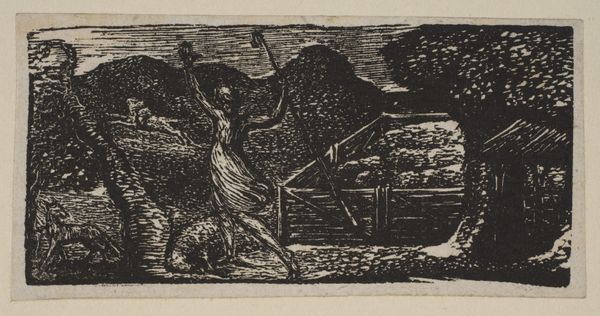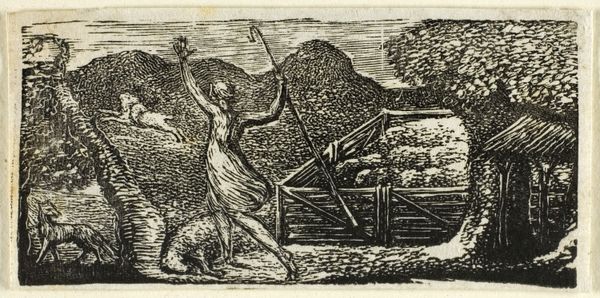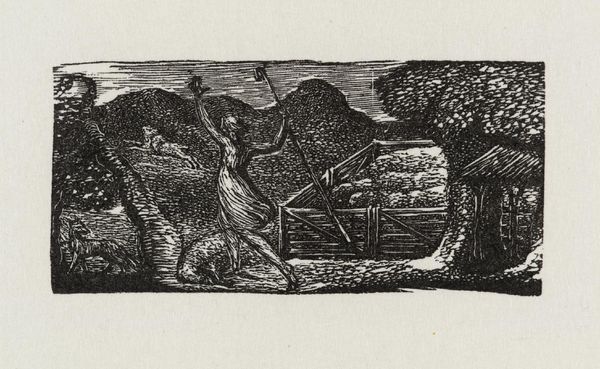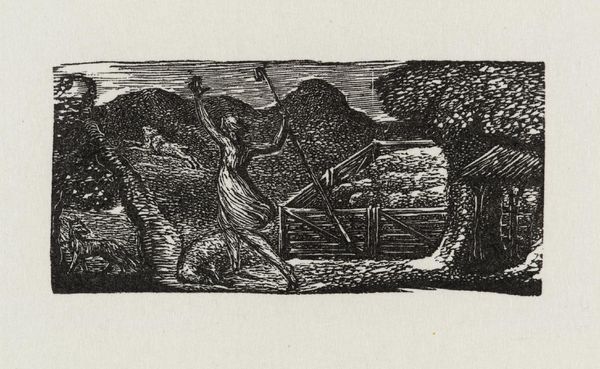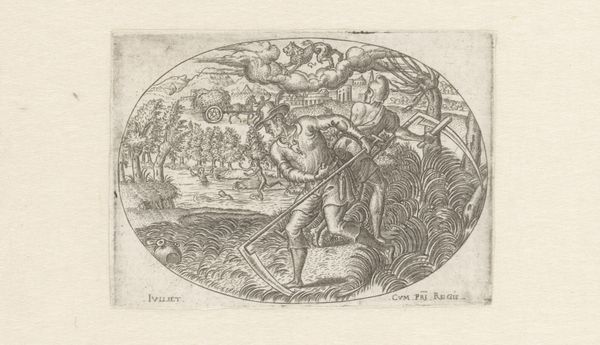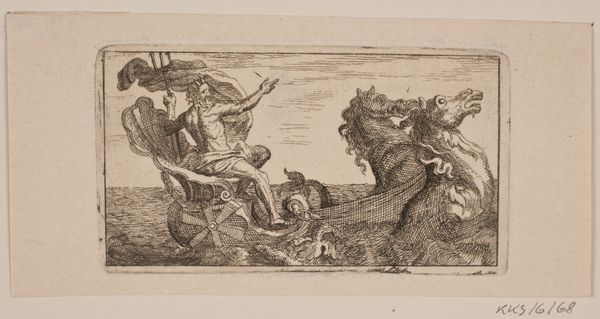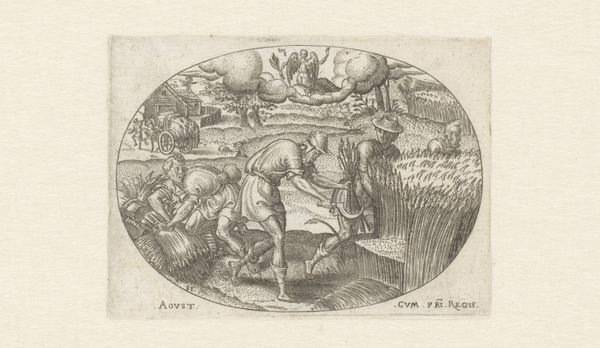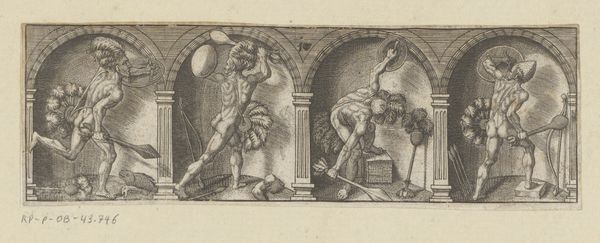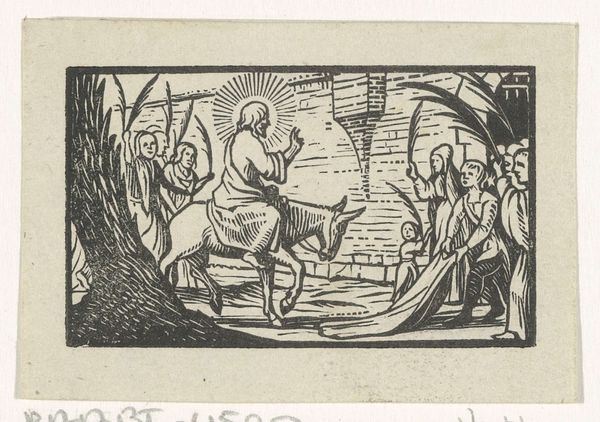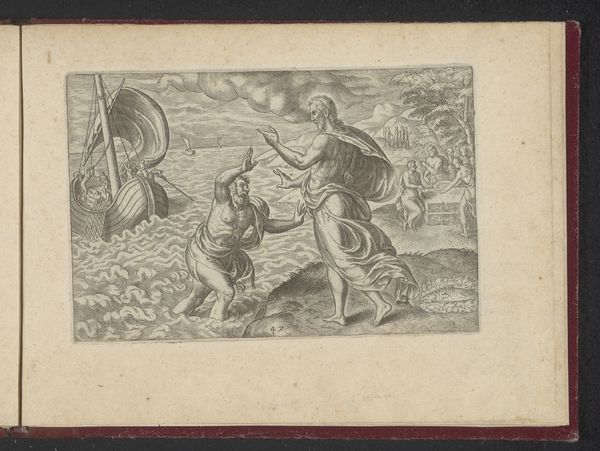
Shepherd Chases Away a Wolf, from Thornton's "Pastorals of Virgil" 1821
0:00
0:00
drawing, print, engraving
#
drawing
#
narrative-art
# print
#
landscape
#
folk-art
#
romanticism
#
engraving
Dimensions: block: 1 7/16 x 2 15/16 in. (3.7 x 7.5 cm)
Copyright: Public Domain
Curator: Before us is William Blake's engraving, "Shepherd Chases Away a Wolf," created around 1821. It's one of the plates from his illustrations for Thornton's "Pastorals of Virgil." Editor: The immediate feeling I get is of raw, untamed energy. The stark contrast, the angularity of the figures…it feels more like a scene of primal struggle than pastoral serenity. Curator: Blake's interpretation challenges the very notion of an idealized pastoral. His shepherd is almost violently active, disrupting any sense of calm with that emphatic pose and the raised arms. How do you interpret that central figure? Editor: Well, in traditional iconography, shepherds represent care and guidance, and lambs embody innocence. But the raised arms could signify invocation or a desperate plea to the divine, which suggests the pastoral space might not be so idyllic. Even the texture created through Blake's engraving, like woodcuts, brings to mind the medieval symbol of protection through faith. Curator: The composition directs our gaze beyond a simple binary. There’s not just the shepherd versus the wolf but also what seems to be a sheep dog assisting from a distance and a smaller creature fleeing in terror beyond. This reading certainly resonates, considering Blake's radical political views at the time and his deep critique of societal power structures. Editor: It makes me think of how these roles might invert when societal hierarchies break down: shepherd and flock at odds, protector turning predatory, prey empowered with agency. Curator: And thinking more of a reading framed in terms of, say, postcolonial theory, Blake challenges the nostalgic image of a pre-industrial, simple rural past—or rather, perhaps comments upon that very nostalgia as itself a symbol for oppression. Editor: It makes the engraving far richer than simply an image of rural life. Symbols are layered upon one another, creating depth. Curator: Blake clearly uses pastoral imagery to make points about social and political injustices, reflecting on how systems of control perpetuate harm. Editor: Looking closely at the emotional landscape it presents reminds us that vigilance against predatory forces remains eternally vital. Curator: Ultimately, through stark visual contrasts, Blake reveals the complex dynamics that are, perhaps, ever present.
Comments
No comments
Be the first to comment and join the conversation on the ultimate creative platform.
